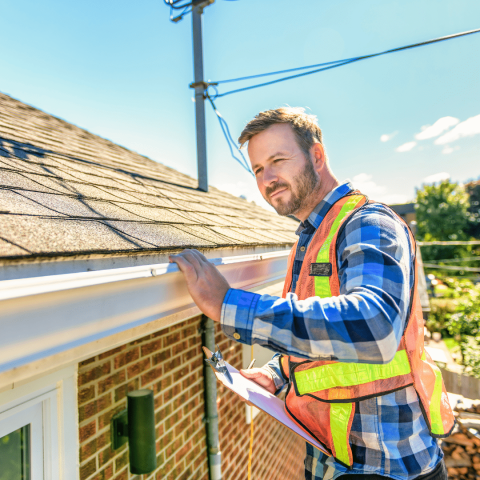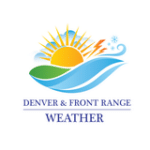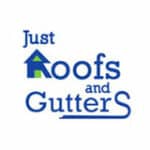Regular roof inspections are crucial for ensuring the safety and integrity of your home. These inspections play a vital role in identifying potential roof safety hazards and preventing accidents, damage, and expensive repairs.
During these inspections, various roof safety hazards can be identified, including leaks, structural damage, gutter problems, accumulation of hazardous debris, and potential pest infestations. Promptly addressing these hazards is essential to guarantee the long-term safety and durability of your roof.
The Role of Routine Roof Inspections
Routine roof inspections play a pivotal role in safeguarding your property against safety hazards. These inspections entail a comprehensive evaluation of your roof’s condition, aiming to identify any signs of wear and tear or potential issues. Here’s why they are of utmost importance:
- Early Detection: Routine inspections excel at catching problems in their infancy, preventing minor issues from snowballing into major, costly repairs.
- Extending Roof Life: By promptly identifying and addressing issues, you significantly extend the lifespan of your roof. This translates to substantial long-term savings.
- Preserving Property Value: A well-maintained roof not only contributes to the safety of your property but also enhances its overall value and curb appeal.
Investing in routine roof inspections is a proactive measure that ensures the safety, longevity, and financial well-being of your property.
Roof Safety Hazards
Leaks
Roof leaks are a significant roof safety concern, carrying potential risks for your property and its occupants. These leaks can lead to immediate water damage, harming ceilings, walls, and belongings and resulting in costly repairs. Furthermore, moisture from roof leaks creates an ideal environment for mold growth, posing health risks. Left untreated, roof leaks can even jeopardize your property’s structural integrity, requiring extensive and expensive repairs. Regular inspections are crucial to detect and address these issues promptly, preventing water infiltration and mitigating the associated risks.
Weak or Damaged Roof Structure
Over time, factors such as water damage, pest infestations, or the natural aging process can compromise key structural components like trusses, rafters, and decking. As these elements weaken, they lose their capacity to support the roof’s weight and stress, potentially leading to sagging or even structural failure.
This hazard not only jeopardizes the integrity of your property but also poses immediate safety concerns for those inside. Structural failures can result in roof collapses or partial collapses, posing a risk of injuries or worse. Neglecting timely intervention can escalate the issue, leading to extensive damage and costly repairs or a complete roof replacement. By conducting regular roof inspections and promptly addressing signs of deterioration, sagging, or rot in structural components, you take a proactive stance in mitigating the risks associated with a weakened roof structure, ensuring the safety and longevity of your property.
Gutter and Drainage Issues
Gutter and drainage issues present substantial roof safety hazards, posing potential risks to your property and its overall integrity. When gutters and downspouts become clogged or damaged, they hinder the proper flow of rainwater from your roof. This obstruction can lead to water accumulation on your roof’s surface, a situation that carries several risks.
The potential risks associated with poor gutter and drainage systems include roof leaks, which can compromise the structural integrity of your property. Moreover, standing water on your roof becomes an ideal breeding ground for mold growth, as mentioned above, posing health risks to occupants. Additionally, prolonged water accumulation can eventually damage your property’s foundation, leading to costly repairs. Therefore, regular inspections that include checking for debris in the gutters, loose or damaged gutter sections, and proper drainage are crucial in ensuring that water flows effectively away from your home, mitigating these potential risks.
Hazardous Roof Debris
Hazardous debris on the roof, such as fallen branches, leaves, and other debris, represents a noteworthy roof safety hazard. These accumulations can lead to various worrisome issues over time, requiring prompt attention and action.
The presence of debris not only adds unnecessary weight to your roof, potentially straining its structural integrity but also creates a fire hazard. Dry leaves and branches can become highly flammable when exposed to heat sources or sparks, posing a direct risk to the safety of your property and its occupants. Regular inspections play a crucial role in identifying and addressing the need for debris removal. This proactive approach helps mitigate the risk of damage, such as roof strain or fires, safeguarding the well-being of your property and its inhabitants.
Pest Infestations
Pest infestations, whether from birds, rodents, or insects, raise significant roof safety concerns and bring the potential for various risks to your property. These unwelcome intruders can infiltrate your attic and roofing system through openings or existing damage, leading to a range of worrisome issues.
The presence of pests not only disrupts the integrity of your roofing system but can also result in structural damage and health risks. For example, rodents chewing on wires and insulation can pose fire hazards, while bird nests can block ventilation systems, causing moisture buildup and mold growth. Moreover, the accumulation of waste and debris from pests can weaken roofing materials and compromise their effectiveness. Regular inspections play a vital role in revealing signs of pest activity, enabling you to take preventive measures promptly. These actions may include sealing entry points, removing nests or infestations, and addressing potential damage before it escalates into extensive and costly problems, thereby safeguarding both your property and the well-being of its occupants.
Early Detection and Prevention
Early detection and prevention are the cornerstones of a robust roof maintenance strategy. By identifying and addressing potential issues before they escalate, you can safeguard your property against a myriad of risks.
Early detection through routine inspections allows you to catch problems in their infancy, preventing minor issues from snowballing into major, costly repairs. This proactive approach not only saves you money but also extends the lifespan of your roof, ensuring long-term financial well-being. Additionally, a well-maintained roof enhances your property’s overall value and curb appeal, contributing to your investment’s growth.
By investing in regular roof inspections and timely maintenance, you’re not just protecting your property; you’re securing your peace of mind and ensuring the safety and well-being of your loved ones and assets.
Do I Really Need to Invest in Routine Roof Inspections?
Absolutely. Routine roof inspections are a proactive measure to safeguard your property and loved ones. They help identify and address roof safety hazards before they escalate. This not only saves you money on extensive repairs but also ensures the longevity of your roof and property value. Additionally, inspections can detect health hazards like mold growth. By investing in regular roof inspections, you ensure the safety, well-being, and peace of mind of your family and assets.
Regular roof inspections are your proactive shield against roof safety hazards. By catching issues early, you not only save money on extensive repairs but also ensure the safety and well-being of your loved ones and assets. Take action today and schedule a roof inspection with Just Roofs and Gutters and enjoy the benefits of a secure and worry-free property.





